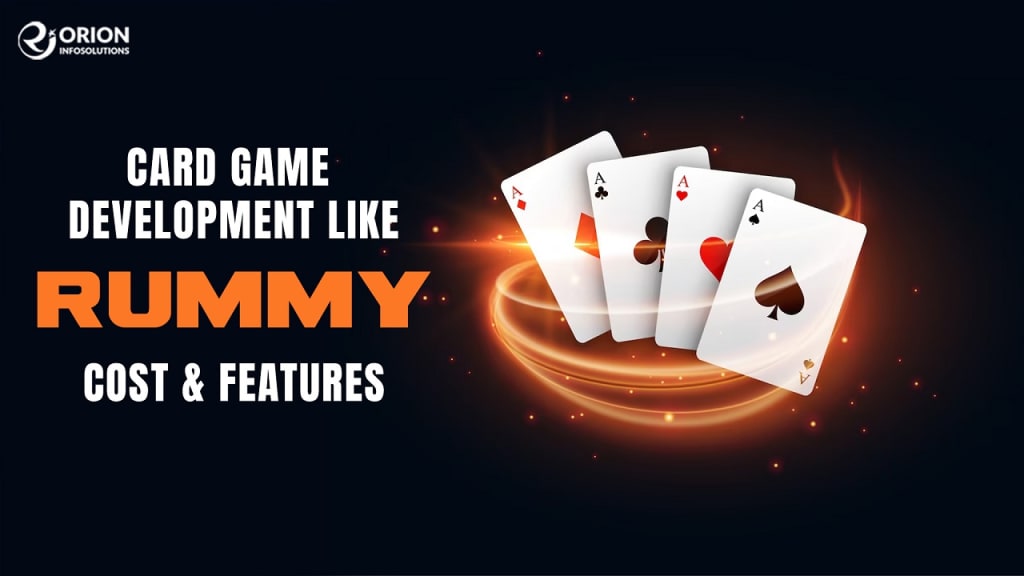Card Game Development Cost & Features
If you're interested in creating a card game, whether for personal or commercial purposes, it's important to understand the features and costs involved in card game development.

Introduction
Card games have evolved significantly over the years, from traditional games like Poker and Rummy to modern games like Hearthstone and Gwent. Whether you're developing a card game for entertainment or profit, it's essential to have a clear understanding of the entire development process, including planning, design, development, testing, and launch.
Planning and Conceptualization
Before embarking on any game development, it's essential to have a solid concept and plan in place. This phase involves defining your target audience, creating a detailed game concept, outlining gameplay mechanics, and creating a development roadmap.
Features of a Successful Card Game
To create a successful card game, you need to focus on the following features:

Engaging Gameplay
The gameplay is the core of any card game. It needs to be intuitive, challenging, and exciting enough to keep players engaged for hours on end.
Quality Artwork
The artwork is the first thing players see when they start playing your game. It needs to be high-quality, visually appealing, and consistent with the game's theme and mechanics.
Social Integration
Social integration is crucial in card games, as it allows players to connect with friends and compete against each other. This can be achieved through social media integration, multiplayer modes, and leaderboards.
In-Game Purchases
In-game purchases can provide an additional revenue stream for your game, while also allowing players to enhance their gaming experience with new cards, game modes, or cosmetic items.
Cross-Platform Compatibility
With so many different devices and platforms available, it's important to ensure your game can be played across multiple platforms to reach a wider audience.
Card Game Design and Development
Once you have a solid plan in place, the next step is to design and develop your card game. This phase involves creating detailed artwork and animations, developing game mechanics, and implementing functional features such as multiplayer and social integration.
Features and Functionalities
The following are some of the essential features and functionalities that are typically included in card games:
Game Mechanics
Game mechanics refer to the rules and systems that govern gameplay, including the rules of the game, the objectives, and the gameplay loop. Well-designed game mechanics are essential for creating engaging and rewarding gameplay experiences.
User Interface
A clean and intuitive user interface is crucial for providing an enjoyable and immersive gameplay experience. A good user interface should be easy to navigate, aesthetically pleasing, and provide essential information to the player.
Game Modes
Different game modes add variety and replayability to the game, keeping players engaged and coming back for more. Examples of game modes include campaign modes, challenge modes, and multiplayer modes.
Multiplayer and Social Integration
Multiplayer and social integration features are essential for modern card games, allowing players to compete against each other online, participate in tournaments, and connect with other players.
In-Game Purchases and Monetization
In-game purchases and monetization features provide a source of revenue for game developers, allowing them to earn money through microtransactions, subscription models, or ad revenue.
Analytics and Tracking
Analytics and tracking features help game developers monitor player behavior and performance, allowing them to make data-driven decisions to improve the game's overall quality.
Testing and Quality Assurance
Testing and quality assurance are critical for ensuring that your card game is bug-free, stable, and meets your players' expectations. This phase involves extensive testing, debugging, and performance optimization to ensure that the game runs smoothly on all devices.
Launch and Post-Launch Support
Once your card game is ready for release, it's time to launch it into the market. This phase involves creating a marketing and promotional plan, submitting the game to app stores, and providing post-launch support, including updates, bug fixes, and customer service to ensure player satisfaction.
Costs Involved in Card Game Development
Developing a high-quality card game involves significant investments of both time and money. Here's a breakdown of the various costs involved in card game development:
Pre-Production Costs
- Conceptualization and Planning: This involves market research, identifying target audiences, developing the game concept, and creating a development roadmap.
- Storyboarding and Artwork: This includes creating detailed art assets, illustrations, animations, and character designs.
Production Costs
- Game Development: This involves programming, game mechanics development, and user interface design.
- Sound Design and Music: This includes creating sound effects, background music, and voice-over recordings.
- Quality Assurance: This involves testing, bug fixing, and performance optimization.
Post-Production Costs
- Marketing and Promotion: This includes creating marketing materials, running ads, and engaging with the community.
- Post-Launch Support: This involves providing ongoing support, updates, and bug fixes.
Conclusion
Developing a card game involves many steps, from planning and conceptualization to launch and post-launch support. By understanding the features and costs involved in card game development, you can create a high-quality game that engages and entertains players while earning you revenue. Remember to invest in quality artwork, engaging game mechanics, and robust social integration to ensure your card game stands out from the crowd.
FAQs
How long does it take to develop a card game?
The development time can vary significantly depending on the scope and complexity of the game. Generally, it can take anywhere from six months to a few years to develop a card game.
Can I develop a card game without programming knowledge?
While it is possible to develop a card game without programming knowledge, it is recommended to work with experienced developers to ensure the game's quality and functionality.
How can I monetize my card game?
You can monetize your card game through in-game purchases, subscription models, or ad revenue.
What platforms can I release my card game on?
You can release your card game on various platforms, including mobile devices, PC, consoles, and web browsers.
How important is user testing for my card game?
User testing is essential for identifying bugs and performance issues, ensuring that your game runs smoothly and meets player expectations. It can also provide valuable feedback for improving gameplay mechanics and user experience.
About the Creator
DC Kumawat
Being Managing Director and Co-founder of Orion InfoSolutions, a Software Development Company. I started my career in Information and Technology 12 years back as a new-age entrepreneur in emerging digital India.






Comments
DC Kumawat is not accepting comments at the moment
Want to show your support? Send them a one-off tip.